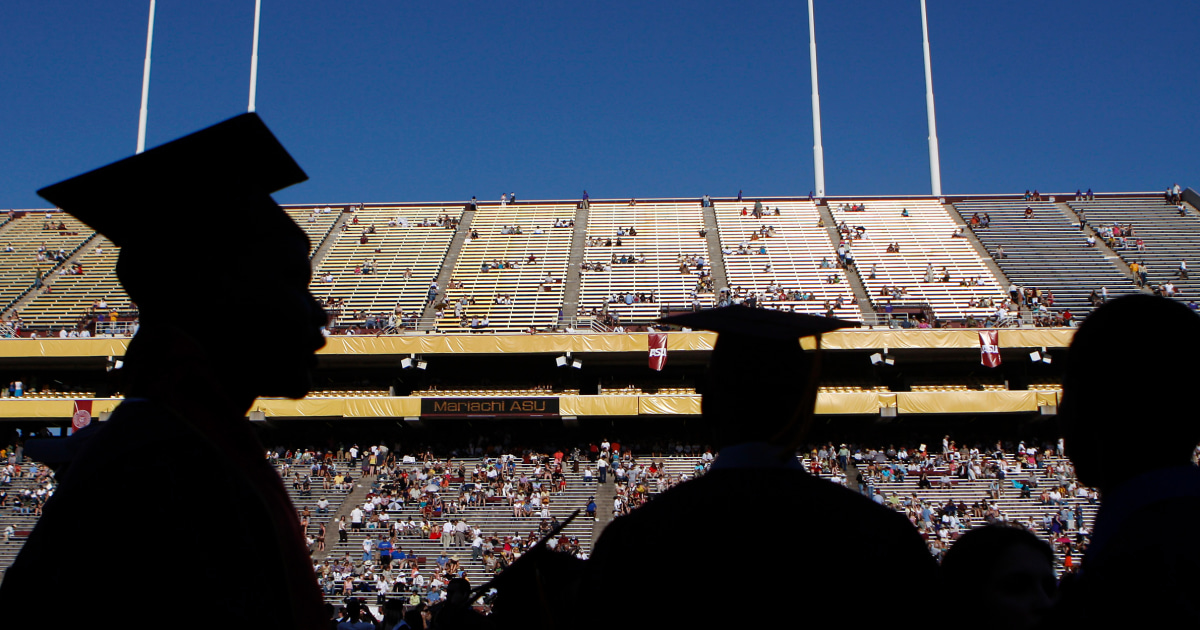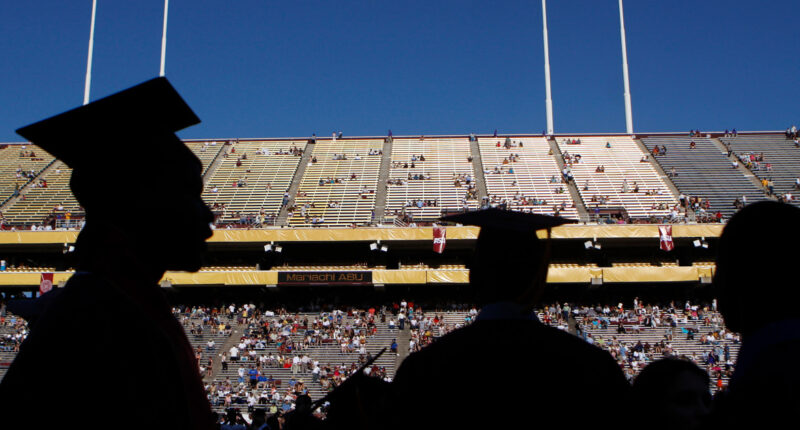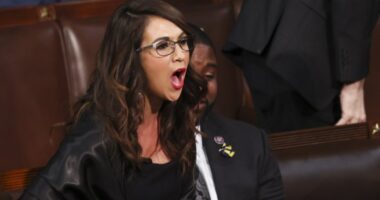
The Supreme Court ruled against President Joe Biden’s one-time student debt forgiveness plan to cancel up to $20,000 in federal student loan debt for more than 40 million borrowers.
The news has distraught borrowers across the country who have benefited from the Covid-era debt payment pause for the past three years.
Among the most upset about the Supreme Court’s decision are the nearly 20 million people, according to the Biden administration, like Joy Morales-Bartlett who stood to have their debts fully canceled.
“It’s disheartening,” said Morales-Bartlett. “We’ve done the right things this whole time, and we are being punished for it.”
With a remaining balance of $19,000, the 47-year-old former teacher was looking forward to seeing her decadeslong journey toward repaying $89,000 in student loan debt finally come to an end.
The payment pause made the public “come on board to the concept of debt cancellation,” Natalia Abrams, president and founder of the Student Debt Crisis Center, said, “because people got to see what their lives would be like without student debt.”
While Biden’s debt forgiveness plan was not designed to fully wipe out all student loans, millions of borrowers hoped it would ease some of the financial burden they will face in October, when the Covid-era debt payment pause is set to end.
Paul Berlet, who graduated from Kutztown University of Pennsylvania last year with a degree in secondary English education, is now a sixth grade English teacher in Delaware. During his time in school, Berlet accumulated about $20,000 in federal student loans.
“You should not need to be in debt to be able to start your life,” Berlet said. “That is not a good way to start your adult life.”
Following multiple student debt payment pause extensions since 2020, Congress recently passed a law preventing further extensions. The payment pause allowed people to focus on other basic needs such as child care, health care, rent costs or, for some, the accumulation of savings for the first time, Abrams said, citing surveys conducted by the Student Debt Crisis Center.
This was the case with Esther Jean-Marie, 30. As the Connecticut resident saw her rent and living expenses increase over the past three years, not having to worry about her student loan allowed her to keep up with rising costs.
According to the U.S. Department of Education, student loan interest will resume Sept. 1 and payments will be due starting in October.
“Taking on that extra bill now is even more stressful than I think it was during the pandemic, because everything is so expensive now,” Jean-Marie said.
Shaniece Conyers, 33, is also in a similar situation. An organizer for the Student Loan Fund, which helps predominantly Black and Latino borrowers in Connecticut navigate debt, Conyers has been reworking her budget spreadsheet ahead of October.
Abrams said she’s “very concerned” about having millions of payments “be turned on all at once.”
“There’s a lot of concern that there will be confusion from the student loan borrowers and confusion with student loan servicers,” Abrams said.
Worried about falling short
The confusion may be more noticeable among young people who have not had to make any payments toward their students loans because they graduated college while the Covid-era debt payment pause was still in place.
Berlet and Erika Guevara, of New York City, are among them.
Guevara, 24, graduated from City College of New York last year with a degree in environmental science. During her time in school, she accumulated about $20,000 in federal student loans.
Though Guevara works two jobs, at a restaurant and at a membership club, she said she still struggles to afford rent costs and living expenses, often taking on credit card debt to make ends meet.
Going to college in the era of social distancing and remote learning deprived Guevara of on-the-field experiences necessary for her to get a job in her field of study, she said.
Guevara wishes to return to school and pursue a master’s in urban design with a specialization in green infrastructure, sustainability and environmental systems to expand her job prospects, “but I’m concerned about taking out more loans,” she said.
“It’s like having a cloud over you, when you’re consistently thinking about your debt,” Guevara said.
According to a 2021 Pew Research Center analysis, first-generation college graduates like Guevara tend to have lower incomes and accumulate less wealth, on average, compared to those with a parent who has a bachelor’s or higher degree, complicating their ability to repay loans.
With her first student debt payment due in October, Guevara said she can only wish that she’ll be able to make it. “I don’t think anyone is prepared.”
Berlet said he was able to save up some money during the payment pause and is currently working a summer job.
“All that money is going to get put away to help me pay down the loans,” he said.
Berlet still worries that despite his best efforts he may still fall short on his upcoming monthly payments toward his student loans while also paying rent, buying school supplies needed to equip his classroom and affording the monthly payments on a car loan he recently took out to replace his old car.
“It’s kind of like forced debt,” Berlet said. “If I want to be a teacher — and I do want to be a teacher, I love my job — there’s no other way for me to be a teacher but to take on that debt.”
Source: | This article originally belongs to Nbcnews.com








